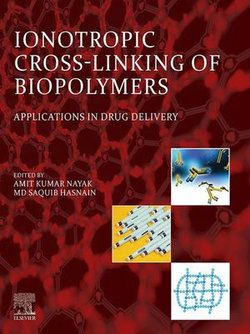Ionotropic Cross-Linking of Biopolymers: Applications in Drug Delivery provides in-depth insights and presents the latest advances in ionotropic cross-linked biopolymeric systems for drug delivery and related applications. Sections introduce the fundamentals of ionotropic cross-linking of biopolymers, including mechanisms, chemistry, cross-linking methods and gelation. Additional content delves into ionotropically cross-linked biopolymers based on a range of sources, including alginate, pectinate, carboxymethyl cellulose, gellan gum, chitosan, carboxymethylated gums, plant polysaccharide blends, and synthetic polymer blends. This is followed by a section focusing on ionotropically cross-linked biopolymeric systems, such as polymeric nanoparticles, microparticles, beads, and reinforced matrices.The last part of the book explores specific advanced drug delivery applications, before considering future opportunities and challenges in the field. This is a valuable resource for researchers and advanced students across polymer science, biomaterials, biomedicine, pharmaceutics, biotechnology, and chemistry, as well as scientists and R&D personnel working in pharmacy, drug delivery, and materials for biomedicine. - Explains chemistry, mechanisms, preparation methods and applications of biopolymeric systems - Covers a range of biopolymer sources, including alginate, pectinate, gellan gum, chitosan, and others - Guides the reader to cutting-edge applications in drug delivery, drug release, cell delivery and tissue engineering



Share This eBook: